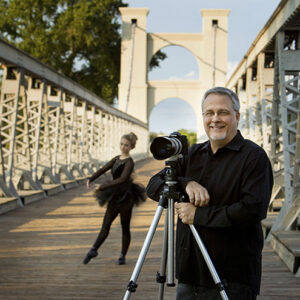 ISOs
ISOs
by Steve Kozak
M. Photog., CR.
CPP
ISO Numbers
We mentioned ISOs in Lesson 1 and during the Sunny 16 rule. So let’s take a deeper look at the impact ISO plays on our exposures.
Remember, the ISO number is a way of rating a film’s or sensor’s sensitivity to light. The ISO’s you want to remember are:
100 200 400 800 1600 3200 6400 and so on.
The higher the ISO number, the more light sensitive it is.
The smaller the ISO number, the less light sensitive it is.
In other words:
The higher ISO’s such as 400 and 800, are quite light-sensitive and are capable of recording in low-light situations such as indoors with no flash or even outside at night.
The lower ISO’s such as 100 and 200 require more light, so they are typically used outside during daylight or when using flash or portable strobes.
Remember, these represent “Whole stops” as there are ISO settings in between these listed. You wrote down the 1/2 stops and 1/3 stops in Lesson 1.
The Impact of ISO on Exposure
We saw in the Sunny 16 lesson that the ISO impacts our exposures. We learned:
On a Sunny Day:
100 ISO 200 ISO 400 ISO 800 ISO
F16 @ 125 F16 @ 250 F16 @ 500 F16 @ 1000
Notice how with each “stop” increase in ISO, there is the same “stop” increase in shutter speed. These are all Equivalent exposures. They all yield the same amount of light onto the sensor. Think of it this way:
- F-stops control the amount of light by how small or large the lens opening is
- Shutter Speeds control the amount of light by how fast or slow the shutter is
- ISO’s control the amount of light by increasing or decreasing the sensor’s sensitivity
As we saw in the Sunny 16 lesson, the Sunny 16 Rule provides us with a starting point for exposures, but we can always utilize our equivalent exposures to effect:
- a large or shallow depth of field
- the recording of a moving subject as “sharp” or a “blur”
- the ability to hand-hold a camera without “camera shake”
Having the ability to adjust f-stops, shutter speeds and ISO’s interchangeably gives us a great deal of control over the outcome of our images.
Example 1
Let’s say it is an overcast day and you are using a 200mm lens and your camera is set to 100 ISO.
The Sunny 16 Rule tells us: F8 @ 125 at 100ISO
The shutter speed rule tells us we have to use a speed faster than the focal length if we want to hand-hold the camera. So, the speed 125 is too slow for a 200mm lens. We need at least 250 if we wish to hold the camera steady.
Here are our equivalent exposure choices:
OPTION 1
F8 @ 125 at 100 ISO
⇒F5.6 @ 250 at 100 ISO
Or
OPTION 2
F8 @ 125 at 100 ISO
⇒F8 @ 250 at 200 ISO
Option 1 represents basic equivalent exposure settings using only the f-stop and shutter speed to make needed adjustments.
Option 2 allows us to change the ISO to impact the shutter speed.
Example 2
Let’s say it is a heavy overcast day and you are using a 50mm lens and your camera is set to 100 ISO.
The Sunny 16 Rule tells us: F5.6 @ 125 at 100ISO
You would like to have a large depth of field and would like to take the image at F16.
So, you work through your equivalent exposures:
F5.6 @ 125 at 100ISO
⇒F8 @ 60
⇒F11 @ 30
⇒F16 @ 15*
*F16 @ 15 would not be possible to hand-hold with a 50mm lens. Remember, the rule says that you must use a speed faster than the focal length if you plan to hand-hold the camera. So, now you will make adjustments to the ISO.
F16 @ 15 at 100ISO
⇒F16 @ 30 at 200 ISO
⇒F16 @ 60 at 400 ISO
Now you can hand-hold your camera, and still use F16.
Remember, the f-stops, shutter speeds and ISO’s represent a one stop difference in exposure and you can use them interchangeably to determine exposure.
You can make any changes you wish to any of the three, so long as you make the same counter moves.


